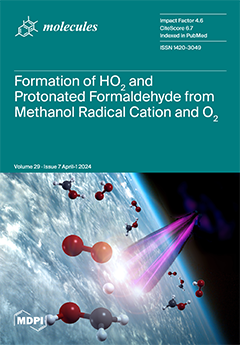The fruits of
Citrus limon are often purchased for their vitamin C-rich juice, while the fruit peel and the tree leaves are discarded as wastes. This study obtained the chemical profiles of the essential oils (EOs) of
C. limon wastes (the peel and leaves), evaluated their medicinal value as antioxidants, their potential for sustainable use in agriculture as an insecticide for post-harvest preservation of grains, and their potential as a bioresource in livestock feed formulations. The EOs were isolated from
C. limon leaves and peel using a hydro-distillation method on a Clevenger apparatus. The oil constituents were identified using the gas chromatography-mass spectrometry (GC-MS) hyphenated technique. The oils were evaluated for their in vitro antioxidant activity using 2,2-diphenyl-1-picrylhydrazyl (DPPH) and ferric-reducing antioxidant power methods. An insecticidal study was conducted using contact toxicity, fumigation, and repellence bioassay methods against
Sitophilus zeamais (maize weevils). Finally, the predicted income from using lemon peel as an alternative or substitute ingredient for maize in livestock feed formulations was obtained through a conventional simulation method. Chemically, limonene was found to be present in all the EOs analyzed (12–52%), while α-pinene was only found in the fresh leaf and peel oils (13.3% and 10.6%). Caryophyllene oxide was identified as the major component of the dried leaf oil (17.7%). At 20 µg m, the dry peel oil exhibited the highest inhibitory activity (52.41 ± 0.26%) against the DPPH radical, which was comparable to L-ascorbic acid (a standard antioxidant) at 54.25 ± 3.55%. The insecticidal study revealed that the dry peel oil is a better insect repellent (73.33 ± 6.95% at 10 µL) and fumigant (LC
50 = 0.17 µL g
−1 after 48 h) natural agent compared to the peel oil. Conversely, the dry peel oil showed a better contact activity (LC
50 = 1.69 µL g
−1) against the maize weevils compared to the dry leaf oil. The simulation study showed the cost of using dry lemon peel as an alternative to maize in livestock feed formulation to be ZAR 2.8 billion, compared against the higher cost of feed formulation with maize, which currently stands at ZAR 24.9 billion. This study has shown that
C. limon wastes (the peel and leaves) contain EOs with unique chemical profiles, valuable medicinal properties as free radical scavengers, and considerable insecticidal properties for agricultural use in post-harvest grain preservation, presenting a cost-effective and promising bioresource for livestock feed production.
Full article






